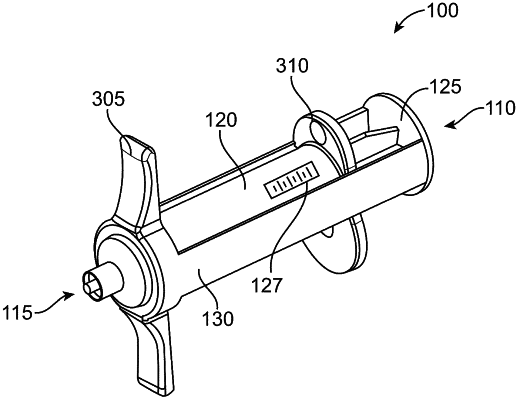| CPC A61B 17/22 (2013.01) [A61M 5/3129 (2013.01); A61M 5/3137 (2013.01); A61B 2017/22079 (2013.01)] | 6 Claims |

|
1. A device for aspirating fluid from a body lumen, comprising:
an internal syringe barrel member defining a chamber, the syringe barrel having an opening through which fluid can pass;
a plunger movably positioned at least partially within the chamber and including a plunger seal;
an external syringe barrel connected to the plunger, wherein the internal syringe barrel is movably positioned inside the external syringe barrel, wherein the plunger and the external syringe barrel collectively form a body that can move relative to the internal syringe barrel;
first and second finger elements extending outward from the internal syringe barrel;
third and fourth finger elements extending outward from a distal end of the external syringe barrel;
wherein movement of the first and second finger elements relative to the third and fourth finger elements causes relative movement between the plunger seal and the chamber so as to aspirate fluid into the chamber;
a locking mechanism movable between a first state and a second state, wherein the locking mechanism locks a position of the plunger seal relative to chamber when the locking mechanism is in the first state, and the locking mechanism permits relative movement of the plunger seal relative to chamber when the locking mechanism is in the second state.
|